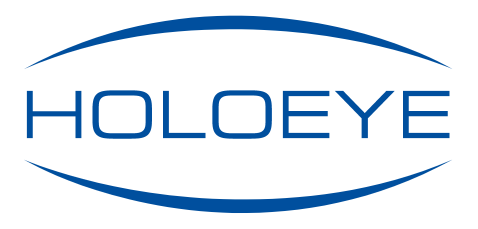LUNA Phase Only Spatial Light Modulator
The LUNA Phase Only Spatial Light Modulator is our most compact SLM platform for integration into small sized or even portable solutions.
LUNA Spatial Light Modulator – Microdisplay Features
Display Type
Reflective LCOS (Phase Only)
Resolution
1920 x 1080
Pixel Pitch
4.5 µm
Fill Factor
91 %
Active Area
8.64 x 4.86 mm (0.39″ Diagonal)
Addressing
8 Bit (256 Grey Levels)
Signal Formats
HDMI – HDTV Resolution
Input Frame Rate
60 Hz
Color Field Rate
180 Hz – three color fields
The LUNA phase only Spatial Light Modulator (SLM) consists of a driver unit with standard digital video interface (DisplayPort) and a phase only LCOS (Liquid Crystal on Silicon) microdisplay with full HD resolution (1920 x 1080 pixel) and 4.5 µm pixel pitch leading to an active area diagonal of 0.39” with an aspect ratio of 16:9.
The driver ASIC is embedded in the LCOS microdisplay itself. This saves board space which enables a very compact driver and makes integration more convenient. The standard driver box has a size of only 84.4 x 47 x 28.8 mm. The display can even accept video data input via a 4-lane MIPI DSI. This brings phase only Spatial Light Modulator technology to a new level of potential for industrial implementations.
The LUNA-VIS-111 version is capable of use in color field sequential (CFS) phase applications with >= 32 linearly distributed phase values for each color (R, G, B) from 0 π to 2.2 π. The light source is triggered for ~1.1 ms per color field.
A basic requirement to achieve the faster response time necessary for CFS, is a higher display temperature of 55°C and adapted voltage settings, saved in the corresponding configuration file. We highly recommend to use a HOLOEYE Thermal Management System (TMS) in order to control the display temperature in CFS mode.
Versions
HOLOEYE offers different phase display versions which can be driven with the LUNA driver unit. The different display versions are optimized for the use at different wavelength ranges. Currently we offer a VIS version (420 – 650 nm), a NIR version (680 – 1100 nm) and a version for the telecommunication waveband around 1550 nm (1400-1700 nm).

Product
Reflectivity
Max. Phase Shift
Wavelength Range
Inquiry
LUNA Spatial Light Modulator Kit – Contents:
Software Features
The LUNA phase only spatial light modulator devices can simply be addressed like an external monitor using the standard DisplayPort interface of the graphics card. No additional software or dedicated hardware is needed to operate the SLM.
The device is delivered with a Configuration Manager software. The Configuration Manager can be used to change geometrical settings, brightness, contrast and the electrooptical response by applying a new gamma curve or another digital drive scheme. For these advanced calibrations the device uses an USB connection to a virtual COM port of the computer.

In addition a HOLOEYE SLM Pattern Generator software is provided with the SLM:
- Computation of computer generated holograms (CGH) from user defined images
- Generation of SLM signals representing basic optical functions such as lenses, gratings, axicon and vortex functions
- Superposition of CGH’s with basic optical functions to combine functionalities
Besides that a special SLM Slideshow Player software comes with the device. Also an SLM Display SDK is available for download which provides APIs (Application Programming Interface) for different programming languages to show images and data/ phase arrays directly on a HOLOEYE Spatial Light Modulator:
- National Instruments LabVIEW™ 8.6 and later
- MathWorks MATLAB® R2009b and later
- Octave 5.2
- Python™ 2.7 and 3.x
- C or C++ compiler (e. g. Microsoft Visual C++ Compiler)
Papers & References
HOLOEYE’s Spatial Light Modulators are used in research in various fields of applications. In our publication library you find an extensive selection of links to publications and research papers.





